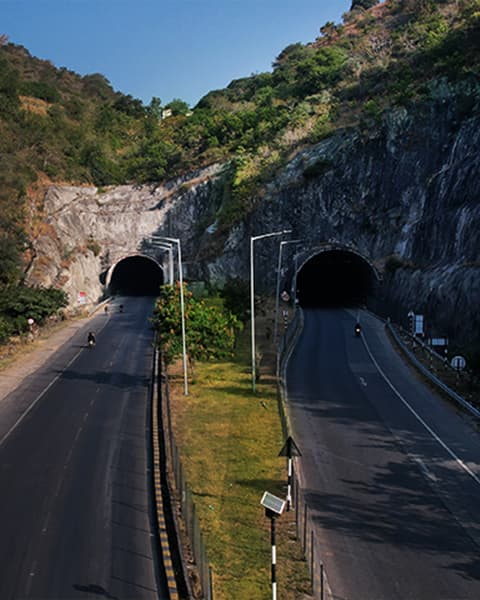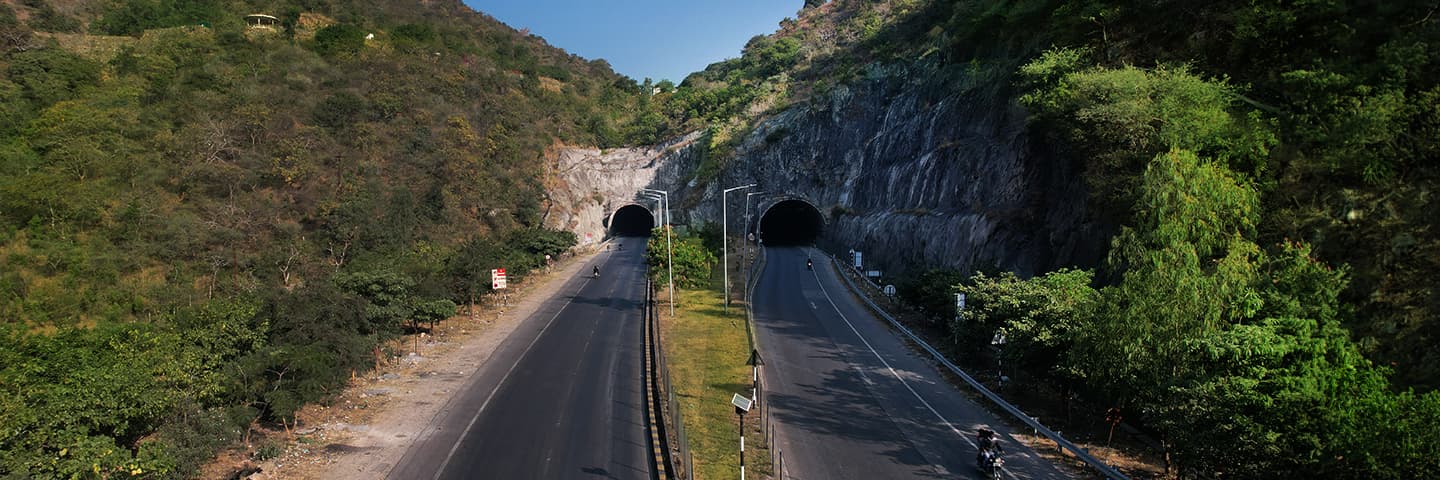Number of Lanes
4
Distance
79.31 Km
Original Concession Period
27 Years

Shreenathji-Udaipur Tollway Pvt. Ltd. is an integral part of National Highway 08 (NH-08), featuring a fully operational 4-laned soft-paved highway that spans from Gomati Chauraha (177 km from Ajmer) to Udaipur (Amberi village Km 256.310), covering a project stretch of 79.310 km. The Letter of Award received from NHAI on March 12th, 2012, commencing commercial operations on December 4, 2015. The Concession period ends at April 27, 2039. This stretch of NH-8 connects major cities such as Delhi, Mumbai, Gurgaon, Udaipur, Ahmedabad, and various towns across Haryana, Rajasthan, Gujarat, and Maharashtra.
NH-8, stretching over 1419 km, serves as a vital link between the national and commercial capitals of India. It plays a crucial role in Rajasthan, connecting Jaipur and Udaipur, and facilitating interstate and intrastate traffic movement. Passing through the scenic Aravalli mountain range, the project corridor showcases landmarks like the holy Hindu shrine Shrinathji and the prime deity of Mewar, Eklingji. Notable locations along the alignment include Udaipur, Nathdwara, Rajsamand, Rajnagar, Kelwa, and Gomti.
The project stretch features a tunnel near Udaipur, two elevated corridors, four flyovers, two major bridges, two toll plazas, six-way side amenities (WSA-Truck Lay Bys), 44.305 km of service/slip roads, and 24.40 km of LED highway lighting. The land use along the corridor is diverse, encompassing hilly terrain, minor settlements (except Nathdwara and Rajsamand), agricultural lands, industrial areas, and barren lands. Notably, the corridor passes through marble deposit areas like Kelwa, contributing to the region's economic activities through large-scale marble stone mining.
Benefits of the Project Road
Enhanced Connectivity: This project has greatly improved connectivity by linking previously isolated regions to major urban centres, leading to increased movement of goods, services, and people.
Improved Safety: A well-maintained highway enhances road safety and reduces traffic congestion. Investments in infrastructure, such as road widening, bridges, tunnels, road lighting flyovers, wayside amenities, and incident management services contribute to the overall well-being of road users. Fatalities have been reduced by 32% by the development of the project corridor.
Reduced Travel Times: Modernizing the road has considerably reduced travel times for commuters and long-haul transportation. This has made the route more favourable due to enhanced connectivity and improved road conditions.
Economic Growth: The improved road infrastructure has attracted investments and stimulated economic growth by making the region more accessible to businesses. This has led to job creation and increased economic opportunities for local communities.
Impact on Road Users
Commuters: The project has significantly improved the lives of commuters, offering shorter travel times and increased safety.
Truck Drivers: Long-haul truck drivers benefit from reduced transit times and lower operating costs, which enhances the efficiency of the logistics industry.
Tourists: Udaipur is a major tourist destination known for its palaces, lakes, and historical sites. Nathdwara is famous for the Shrinathji Temple, a significant pilgrimage site. The highway makes it easier for tourists to travel between these two places, boosting tourism in the region.
Impact on Communities
Economic Development: This highway is essential for the transportation of agricultural produce and other goods from the surrounding areas to Udaipur and vice versa. This aids in trade and commerce, benefiting the local economy. The project connects the marble mines, catering to the requirements of several marble merchants and products like slabs, tiles, slurry, and artefacts across neighbouring states of Gujarat, Madhya Pradesh and more.
Employment Opportunities: The project has created employment opportunities for residents in construction, maintenance, and associated works related to project development and maintenance activities, including toll operations.
Infrastructure Development: The project has stimulated the growth of ancillary infrastructure, benefiting local entrepreneurs. The highway benefits businesses that rely on tourism, such as hotels, restaurants, and travel agencies. It enables them to attract more customers and grow their operations. More than 175 hotel businesses and 7 fuel stations have opened after the development of the corridor.
Environmental Impact: The road project has been mindful of environmental concerns and has taken measures for ecological preservation and sustainable development.
Accolades
The project has been certified under six ISO certification categories:
- ISO 9001:2015 Quality Management System
- ISO 14001:2015 Environmental Management System
- ISO 39001:2012 Road Traffic Safety Management System
- ISO 45001:2018 Occupational Health and Safety Management System
- ISO 31000:2018 Risk Management
- ISO 27001:2022 Information Security and Management System
Shreenathji - Udaipur Tollway Private Limited (SUTPL)
CIN: U45201TN2012PTC166100

